-
 play_arrow
play_arrow
The CRUSADE Radio Network CRUSADE Radio Network
-
 play_arrow
play_arrow
The Church Doctrine Episode 2 - O Brother, Wherefore Art Thou? The Church Doctrine Episode 2
-
 play_arrow
play_arrow
Audio Post Format TheKingDude
Halloween: Another Holiday Stolen From Catholics & Made Into Hallmark Horror
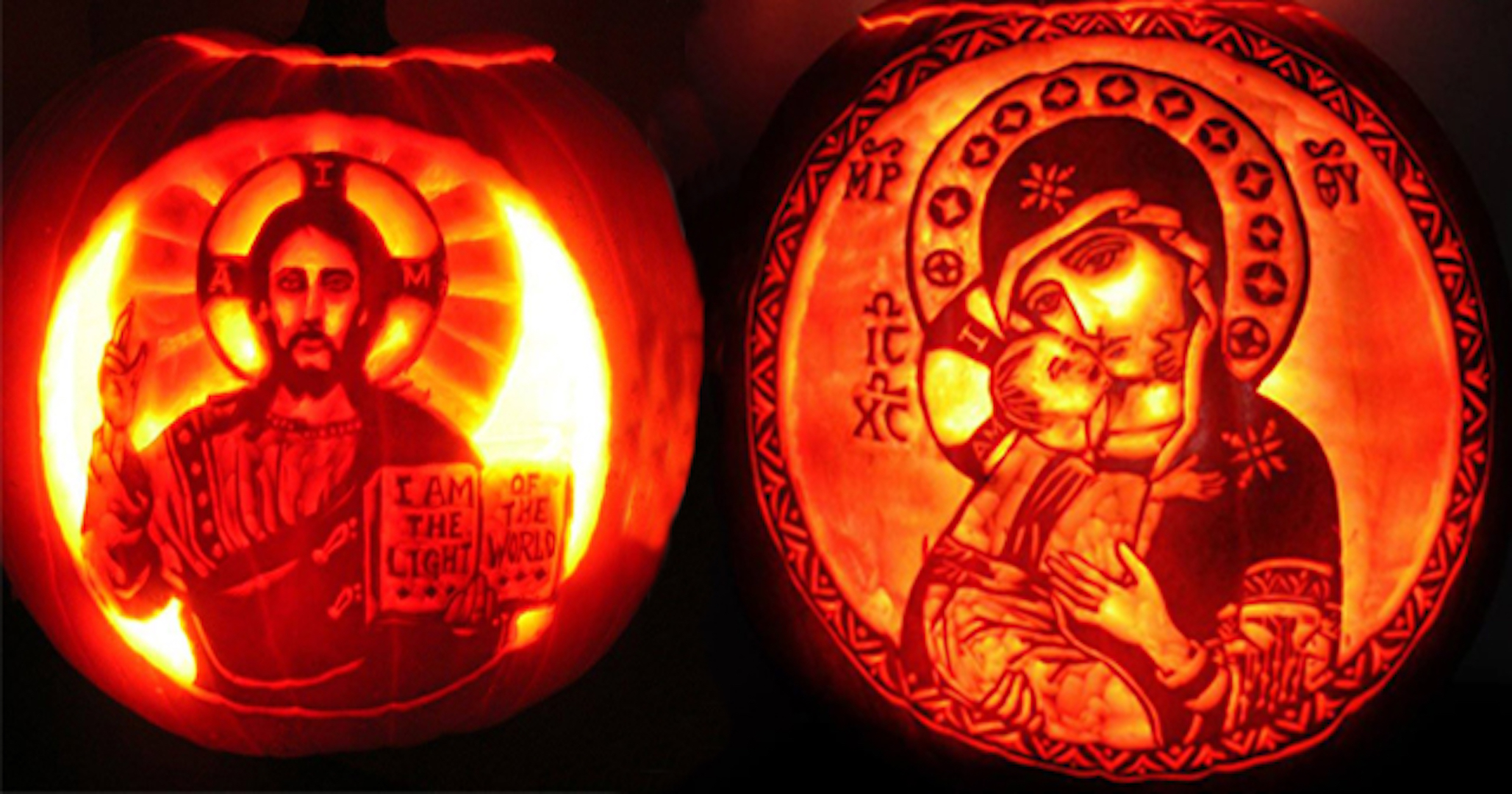
Mandeville, LA – Pop Quiz, halloween hotshots: What do Christmas, New Years, Fat Tuesday, Lent, Groundhog Day, St. Valentines Day, St Patrick’s Day, Good Friday, Easter and Halloween all have in common, that almost no one knows of today?
Answer: They are all yearly celebrations from the Roman Catholic Calendar & tradition that have all been co-opted for the Walton family, Hallmark Cards, Amazon and every other big-box vendor of cheap candy or slave labor produced plastics to profit from. Gone are their religious and liturgical origins, meaning and purpose.
Soul, soul, an apple or two,
If you haven’t an apple, a pear will do,
One for Peter, two for Paul,
Three for the Man Who made us all. -Ancient English children’s poem sung on All Hallow’s Eve
In 1956 Mary Reed Newland wrote her signal work The Year And Our Children. By “Year” Mary meant Liturgical Year i.e. The Roman Catholic Calendar. In Chapter 19, “What are the historical roots of Halloween? Should Christians celebrate this holiday? And if so, how?” Mary wrote about Halloween and how her family was working to restore its Catholicity. Below is an abridged version, the book is available here.
Listen To My Halloween Interview With Sir Charles Coulombe: Who Stole Halloween And How Do We Take It Back!?
You still hear people doubt it, even when you show them that Halloween is All-Hallows’-Eve which is the night-before-All-Saints’-Day. Some tell me they understand that Halloween pranks were a post-Reformation contribution to plague Catholics who kept the vigil of All Saints. Now it is possible that Halloween was abused for such a purpose; nevertheless, during all the Christian centuries up until the simplification of the Church calendar in 1956, it was a liturgical vigil in its own right and thus has a reason for being. Learning this, one pious lady of our acquaintance was heard to say: “Oh, I’m so glad to know that. I was about to write my congressman and suggest the whole thing be outlawed.”
A celebration much like our Halloween, with bonfires and feasting on apples and nuts and harvest fruits, was part of pagan worship for centuries. The Britons celebrated in honor of their sun-god with bonfires, a tribute to the light that brought them abundant harvest. At the same time, they saluted Samhain, their “lord of death,” who was thought to gather together, at last, the souls of the year’s dead which had been consigned to the bodies of animals in punishment for their sins. The Romans celebrated the same kind of festival at this time in honor of their goddess Pomona, a patroness of fruits and gardens. Whether the Church “baptized” these customs or chose this season for her feasts of the dead independent of them, their coincidence shows again how alike men are when they seek God and His ways, give praise, use the language of symbols to express the inexpressible.
It was in the eighth century that the Church appointed a special date for the feast of All Saints, followed by a day in honor of her soon-to-be saints, the feast of All Souls. She chose this time of year, it is supposed, because in her part of the world it was the time of barrenness on the earth. The harvest was in, the summer done, the world brown and drab and mindful of death. Snow had not yet descended to comfort and hide the bony trees or blackened fields; so with little effort, man could look about and see a meditation on death and life hereafter.
Apparently how you spent the vigil of All Saints depended on where you lived in Christendom. In Brittany, the night was solemn and without a trace of merriment. On their “night of the dead” and for forty-eight hours thereafter, the Bretons believed the poor souls were liberated from Purgatory and were free to visit their old homes. The vigil for the souls, as well as the saints, had to be kept on this night because, of course, the two days were consecutive feasts and a vigil is never kept on a feast.
Breton families prayed by their beloveds’ graves during the day, attended church for “black vespers” in the evening and in some parishes proceeded thence to the charnel house in the cemetery to pray by the bones of those not yet buried or for whom no room could be found in the cemetery. Here they sang hymns to call on all Christians to pray for the dead and, speaking for the dead, they asked prayers and more prayers.
Late in the evening in the country parishes, after supper was over, the housewives would spread a clean cloth on the table, set out pancakes, curds, and cider. And after the fire was banked and chairs set round the table for the returning loved ones, the family would recite the De Profundis (Psalm 129) again and go to bed. During the night a townsman would go about the streets ringing a bell to warn them that it was unwise to roam abroad at the time of returning souls.
It was in Ireland and Scotland and England that All Hallows’ Eve became a combination of prayer and merriment. Following the break with the Holy See, Queen Elizabeth forbade all observances connected with All Souls’ Day. In spite of her laws, however, customs survived; even Shakespeare in his Two Gentlemen of Verona has Speed tell Valentine that he knows he is in love because he has learned to speak “puling like a beggar at Hallowmas.” This line must have escaped the Queen.
Tricks or Treats Old Style
Begging at the door grew from an ancient English custom of knocking at doors to beg for a “soul cake” in return for which the beggars promised to pray for the dead of the household. Soul cakes, a form of shortbread and sometimes quite fancy, with currants for eyes became more important for the beggars than prayers for the dead, it is said. Florence Berger tells in her Cooking for Christ a legend of a zealous cook who vowed she would invent soul cakes to remind them of eternity at every bite. So she cut a hole in the middle and dropped it in hot fat, and lo a doughnut. Circle that it is, it suggests the never-ending of eternity. Truth or legend, it serves a good purpose at Halloween.
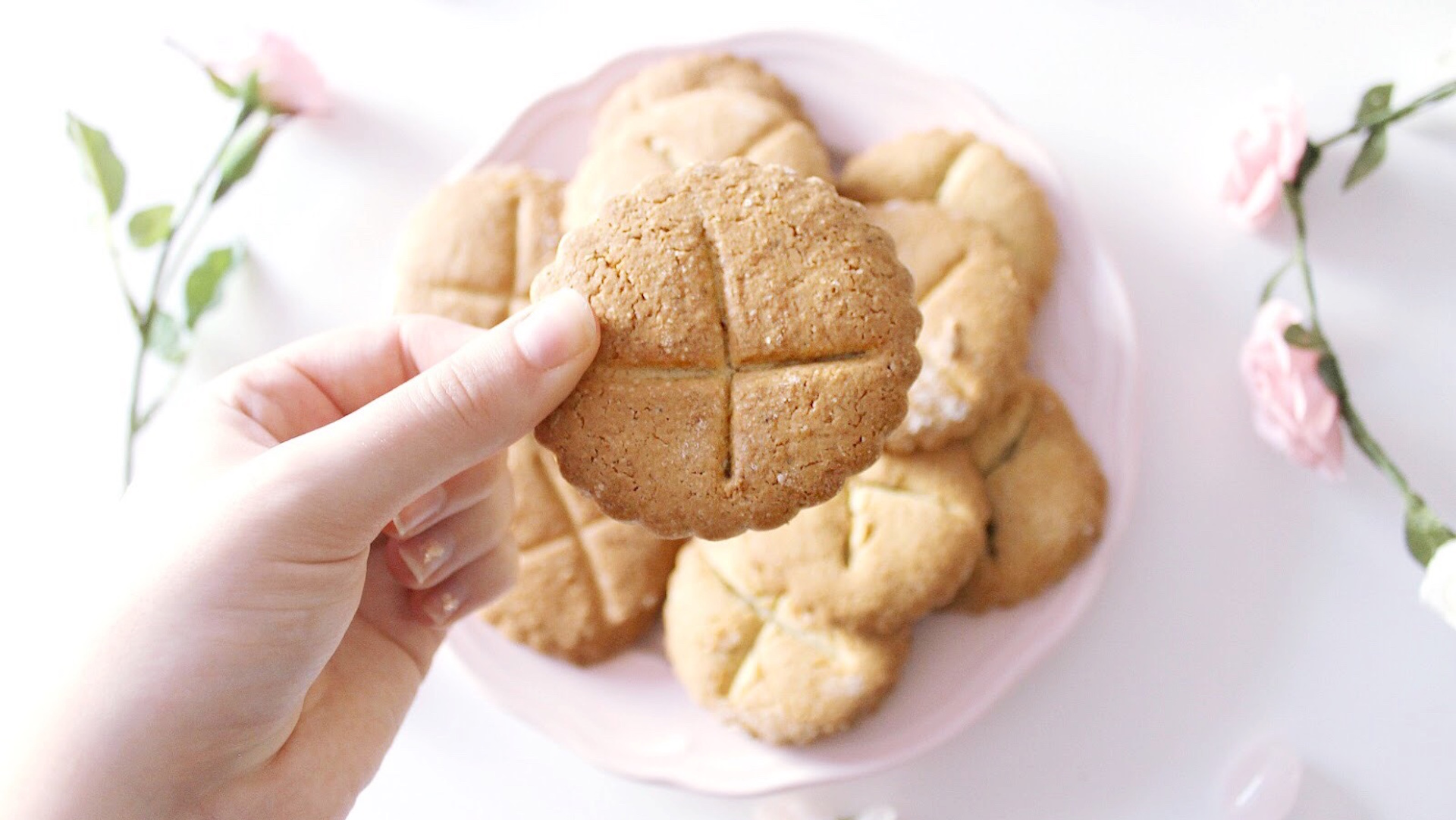
The refrains sung at the door varied from “a soul cake, a soul cake, have mercy on all Christian souls for a soul cake,” to the later:
Soul, soul, an apple or two,
If you haven’t an apple, a pear will do,
One for Peter, two for Paul,
Three for the Man Who made us all.
Here, they had either run out of soul cakes or plain didn’t care. Charades, pantomimes, and little dramas, popular remnants of the miracle and morality plays of the Middle Ages, commonly rehearsed the folk in the reality of life after death and the means to attain it. It is probably from these that the custom of masquerading on Halloween had its beginning. The folly of a life of selfishness would be the message pantomimed by the damned; the torment of waiting, the message of the souls from Purgatory; the delights of the beatific vision, the message of the Heaven-sent. Together they warned the living to heed the means of salvation before it was too late. Doubtless, the presence of goblins and witches with cats (ancient symbols of the devil) were remnants of pagan times bespeaking to Christians of spirits loosed from hell to keep track of their own and herd them back at cockcrow. Saint-Saëns’ Danse Macabre with death fiddling his eerie spell over the graveyard fascinated us all the years of growing up. Waiting for the sound of cockcrow, which would send the souls scuttling back to their graves, was almost too much suspense to bear. Little did we know that it was inspired by old French customs and superstitions on All Hallows’ Eve.”

Mary Newland then gave some suggestions on how to conduct a Halloween party, make it fun for the kids but keep the liturgical commemoration front and center.
Next, costumes. Saint costumes have been much in vogue in our circle since the rediscovery of Christian Halloween. These are lots of fun to make, but if you are having non-Catholic children who do not know about patron saints, a full course on the subject is not possible before the party. You might suggest that these come as some departed soul, one of those from eternity who come to warn the living to mend their ways. This gives much leeway and justifies the inevitable cowboys and space cadets. Cowboys do eventually depart, I am confident, and space cadets look as though they already have.
A rhymed invitation tells everybody that this is a real party and also keeps enough of the familiar Halloween ghostliness to enhance the rest, which sounds a little unfamiliar. Our invitation goes like this:
Come to keep vigil on All Hallows’ Even,
With Monica, Jamie, Peter and Stephen,
With John, Philip, Christopher, dressed up like souls;
Bring berries of red to help warn off the ghouls.
Come knock at the door and beg for soul cakes,
Pray hard for the souls, for the prayers that it takes
To speed them to Heav’n go too often unsaid,
Band who prays for poor soulsy will ne’er want for bread.
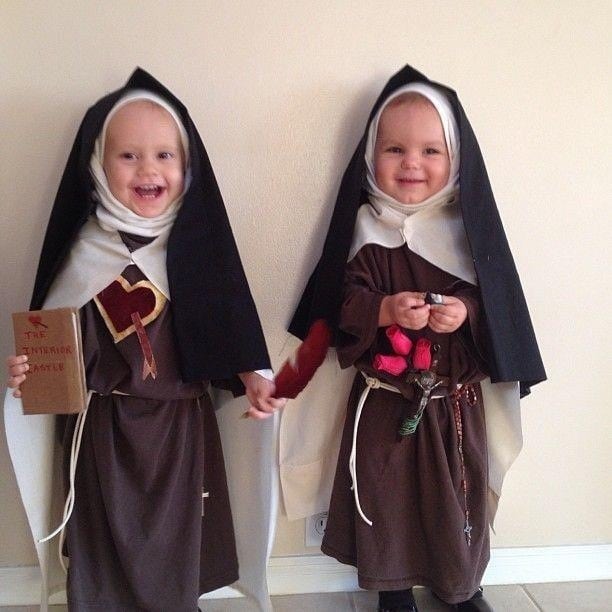
This hints at what is going to happen. Followed by a telephone call or a note to the mothers of the guests, it gives everyone time to get the “feel of it.” This is important. If it isn’t clearly explained how they will beg at the door and say a prayer for the dead, the party will disintegrate right there with the “gimmes.”
If there are many small children, plan the party for them and let the older children help give it. If there are more older children, it is best to plan the party for them. Sometimes it will work both ways, but more often than not, widely divergent age groups do not combine successfully for parties because the same games and entertainments do not appeal to both. If you have both younger and older children, you might plan with the mothers of the neighborhood to hold two parties one for little children at one house, one for older children at another.
For very small children, ducking for apples, apples on strings, refreshments, the chance to make noise and antics in their costumes, can be nicely gathered up and rounded off by reading one or two stories. If they have come in saint costumes, the outstanding game can be telling your saint’s story after the others have guessed who you are.
For older children or even adults, “A Trayful of Saints” is a good game. On a tray place a dozen or more objects that symbolize familiar saints. For example: key St. Peter; flower Little Flower; rose St. Rose of Lima; dog St. Dominic; bird St. Francis of Assisi; cross St. Helena; crown St. Elizabeth of Hungary; eagle St. John the Evangelist; shell St. James; Sacred Heart St. Margaret Mary Alacoque; kitchen utensil St. Martha; half coat (paper cut-out) St. Martin of Tours. Go slowly from one guest to another, giving them time to memorize what is on the tray. Then pass out paper and pencils and have them list what they remember, and what saint they think they symbolize.
Halloween, another example of how life in the age of Faith incorporated the faith, the Gospel teaching of Our Lord and the liturgical calendar in everything up until Luther’s revolt began its assault, carried on by his ever-philosophically degrading heirs. Where once, Christian (Catholic) Man lived his life much like St Therese of Lisieux; each man, woman and child practicing their own “little way” by keeping the Faith and its teachings in the foreground of all they did. Today there is no ground for this practice, fore, back or play!
Written by: TheKingDude
catholic halloween holidays Mary Reed Newland
Similar posts
Featured post

Latest posts
Current show
Upcoming shows
Condimentum Elit
11:40 pm - 11:55 pm
Chart
HERE IT GOES YOUR COPYRIGHT TEXT. CAN ALSO CONTAIN LINKS LIKE THIS



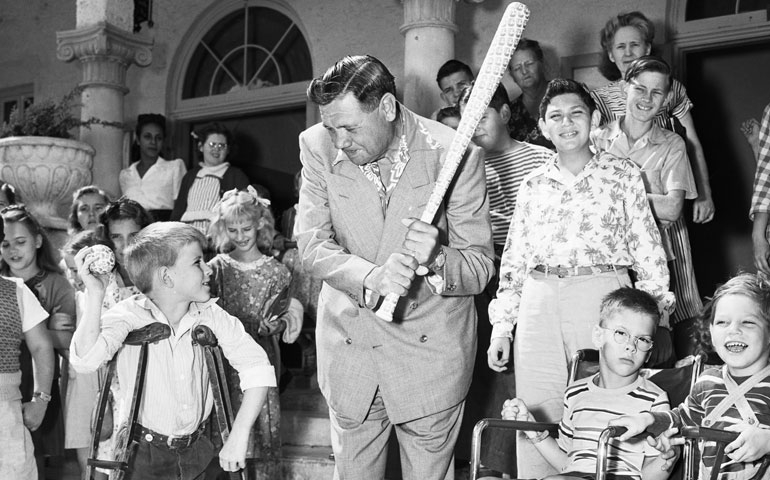




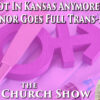
Post comments (0)